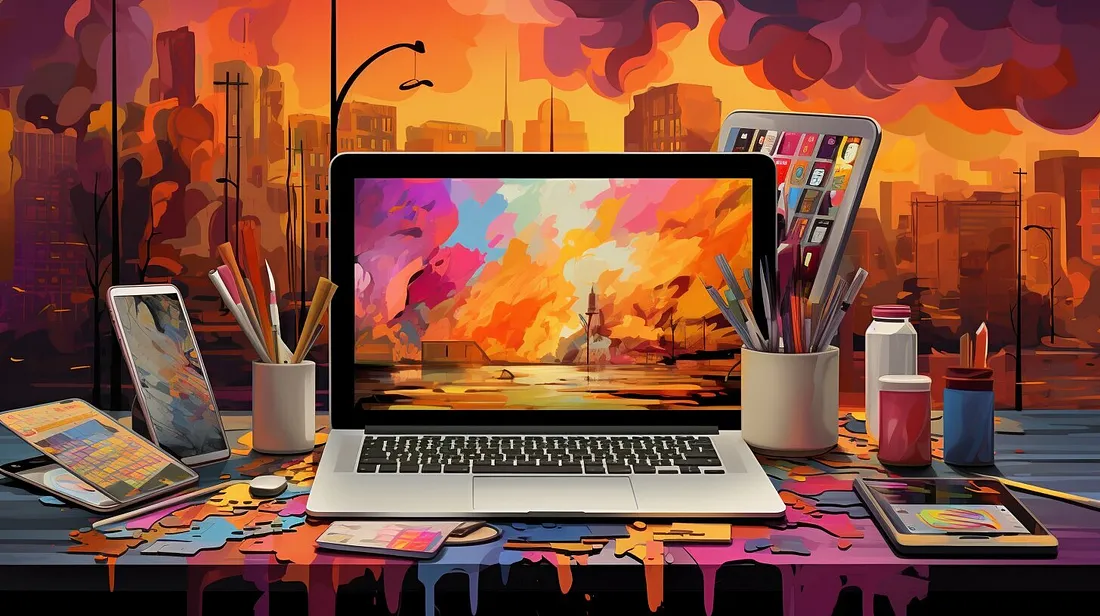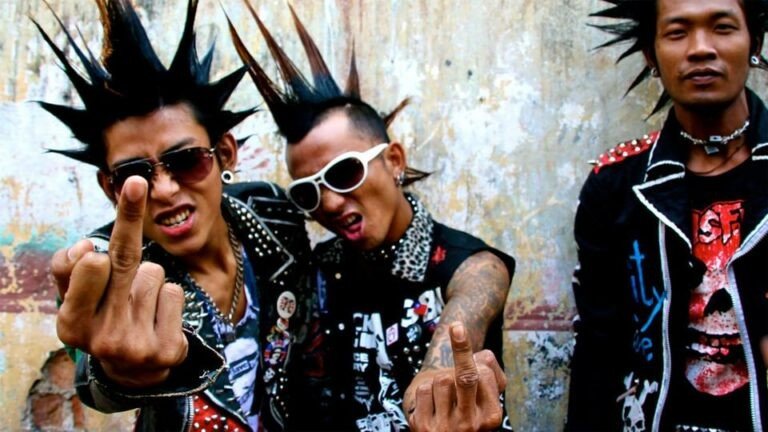Source: Africa Publicity
The sun dipped below the horizon, casting a golden glow over the bustling streets of Lagos. In a modest studio apartment, Adetokunbo Okafor, a young digital artist, put the finishing touches on his latest piece. His workspace was a chaotic yet organized mess of sketches, digital tablets, and vibrant posters. The glow from his computer screen illuminated his face, reflecting the intense concentration in his eyes.
Adetokunbo, known as Ade among his friends, had always been passionate about art. Growing up in a small town in Nigeria, he spent countless hours drawing and painting, dreaming of one day sharing his creations with the world. But it wasn’t until he moved to Lagos that he discovered the vast potential of digital art. Inspired by the endless possibilities, Ade immersed himself in learning new techniques and mastering the tools of the trade.
Meanwhile, thousands of miles away in Nairobi, Amina Muthoni was experiencing her own artistic journey. Amina, a spirited and imaginative artist, had initially struggled to find her place in the traditional art world. Her unique style, blending traditional African motifs with contemporary digital techniques, was often misunderstood. But she remained undeterred, confident that her work would eventually find its audience.
One evening, as Amina was exploring an online art platform, she stumbled upon Ade’s portfolio. She was immediately captivated by his bold use of colors and intricate designs. After browsing through his work, she decided to reach out to him. Amina sent Ade a message, praising his talent and expressing her desire to collaborate.
Excited by the prospect of working with a fellow artist from another part of Africa, Ade quickly responded. Over the next few weeks, they exchanged ideas and shared their experiences, finding common ground in their love for art and their determination to make a mark in the digital art world. They decided to create a joint project that would celebrate African culture and heritage through digital art.
Their collaboration, titled “Echoes of Africa,” began to take shape. Ade focused on creating vibrant, dynamic backgrounds, drawing inspiration from the bustling markets and colorful landscapes of Lagos. Amina, on the other hand, infused the project with intricate patterns and symbols inspired by her Kenyan heritage. Together, they crafted a series of digital paintings that told stories of Africa’s rich history and diverse cultures.
As their project neared completion, Ade and Amina faced the challenge of finding a platform to showcase their work. They were determined to reach a global audience, but the traditional art market often seemed out of reach for digital artists. However, they soon discovered the rise of online art galleries and digital marketplaces, which offered a unique opportunity to share their creations with the world.
One such platform was Artyna, a digital marketplace that specialized in contemporary digital art. Intrigued by its potential, Ade and Amina submitted their work to the platform. To their delight, their project was accepted, and “Echoes of Africa” was featured prominently on the site.
The response was overwhelming. Art enthusiasts from around the world were captivated by the vibrant, expressive pieces. The project’s success opened doors for both Ade and Amina, leading to interviews, exhibitions, and even sales of their digital art pieces. Their work was praised for its originality and for bringing African art into the digital age.
Buoyed by their success, Ade and Amina continued to explore new themes and techniques, always pushing the boundaries of what digital art could achieve. They also became advocates for other digital artists, encouraging them to embrace the medium and seize the opportunities presented by the contemporary art market.
In Johannesburg, they met with Thandiwe, a young artist who had been struggling to gain recognition for her digital illustrations. Inspired by Ade and Amina’s success, Thandiwe decided to experiment with her own style, blending traditional African textiles with modern digital techniques. With their guidance, Thandiwe’s work soon caught the attention of art collectors and critics alike.
As they traveled across the continent, Ade and Amina discovered countless talented artists, each with their own unique vision and style. They realized that the rise of digital art was not just a personal journey but a collective movement that had the power to redefine the contemporary art market.
In Accra, they met Kwame, an artist who used digital art to address social and political issues in Ghana. His powerful pieces sparked important conversations and highlighted the potential of digital art to effect change. In Dakar, they encountered Fatou, whose digital portraits celebrated the beauty and strength of African women. Her work resonated deeply with audiences, earning her acclaim and recognition.
The digital art movement continued to gain momentum, with artists from all corners of Africa contributing their voices and perspectives. Online platforms and social media played a crucial role in connecting artists with audiences and collectors, breaking down barriers and democratizing the art world.
For Ade and Amina, the journey was both rewarding and inspiring. They witnessed firsthand how digital art was transforming lives and communities, providing a platform for artists to share their stories and connect with a global audience. They also saw the impact of their advocacy, as more and more digital artists found success and recognition.
As they reflected on their journey, Ade and Amina knew that this was just the beginning. The rise of digital art in the contemporary art market was an ongoing story, one that would continue to evolve and grow. With each new artist, each new creation, the movement would gain strength, enriching the global art scene and celebrating the diversity of African culture.
In the heart of Lagos, Ade sat at his computer, a new project taking shape on the screen. In Nairobi, Amina did the same, her creative spirit undimmed. Across Africa, from Johannesburg to Accra, Dakar to Cairo, digital artists were working tirelessly, their creations lighting up screens and captivating hearts.
Together, they were part of something greater, a vibrant, dynamic movement that was reshaping the art world. And as they continued to create, innovate, and inspire, they knew that the future of digital art was bright, filled with endless possibilities and boundless creativity.



